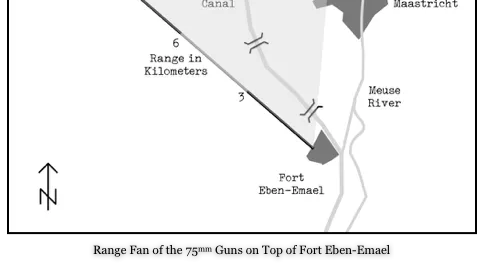This exercise serves neither as an argument for particular courses of action nor a criticism of decisions made in specific circumstances. Rather, it exists to give participants opportunities to immerse themselves in problems faced by a real person at some point in the past, and, in doing so, cultivate such martial virtues as decisiveness, critical thinking, creativity, situational awareness, and functional empathy.
It is 10 May 1940, the first day of “Case Yellow,” the invasion of Belgium and the Netherlands by the armed forces of Greater Germany. You are Sergeant Peter Nikolaus Arent, leader of the Third Squad of Assault Group Granite. Born in 1917, you are a fully qualified parachutist, an experienced combat engineer, and veteran of the Polish campaign of 1939.
For the past six months, you and the other 84 members of Assault Group Granite have been training for a special operation. You did not know the time or place of this undertaking. However, as you spent a lot of time learning about gliders, explosives, concrete bunkers, and steel armor, you suspected that it had something to do with landing on top of an ultra-modern fort.
You recently learned that the mission of Assault Group Granite is the destruction of the weapons of Belgian the fortress of Eben-Emael. Built in the late 1930s, Eben-Emael consists largely of underground tunnels and subterranean chambers built into a plateau. The long-range artillery of the fort is located in casemates (which don’t rotate) and turrets (which do) on top of the plateau that overlooks the place where the Albert Canal meets the Meuse River. The close-defense weapons of the fort, both machine guns and anti-tank guns, arm a series of blockhouses built into the reinforced concrete walls of the fortress.
Fort Eben-Emael serves a number of purposes. From your point of view, the most important of these is the provision of fire support for the Belgian forces defending the line of the Albert Canal. In particular, the artillery pieces on top of Fort Eben-Emael are able to drop a large number of shells on German forces moving towards the Albert Canal from the east, and, in particular, those who are attempting to seize or hold the three large bridges that cross the canal. You have also been told that the three sister units of Assault Group Granite (Assault Group Iron, Assault Group Concrete, and Assault Group Steel) will be landing near these bridges in order to seize and hold them, thereby enabling German ground forces emerging from the city of Maastricht to move rapidly over the Albert Canal.)
The next step in this exercise is the presentation of the first problem, which can be found in the article marked Sergeant Arent (Problem 1).
Note: On the organizational diagram, four dots surmount the symbol that represents Assault Group Granite. This, in the dialect of NATO map symbols used in the Tactical Notebook, indicates that the unit is larger than a platoon, but smaller than a company.








